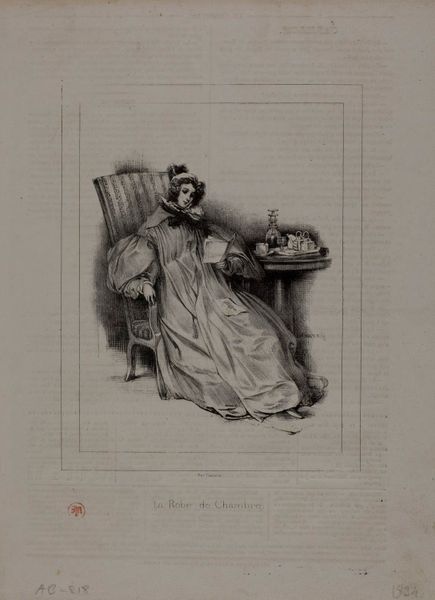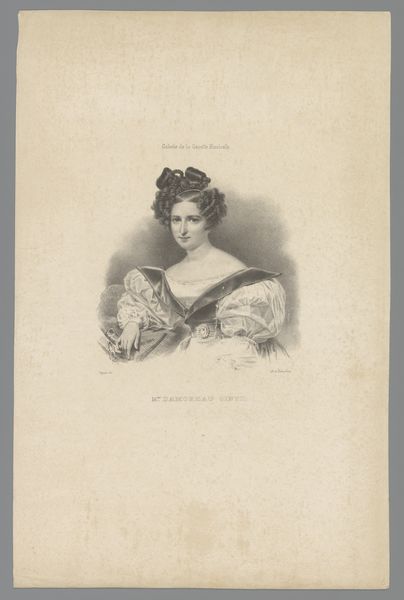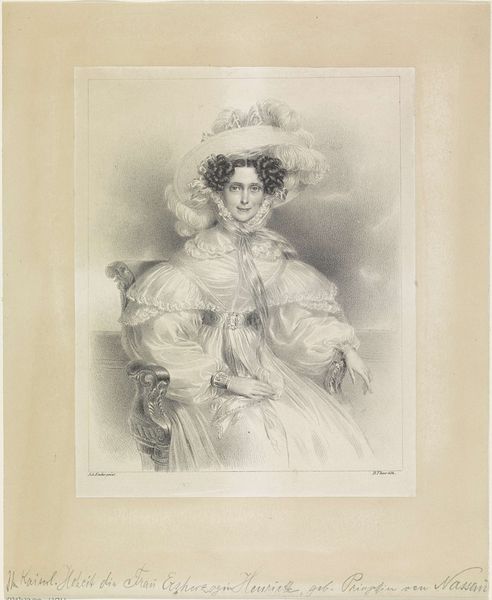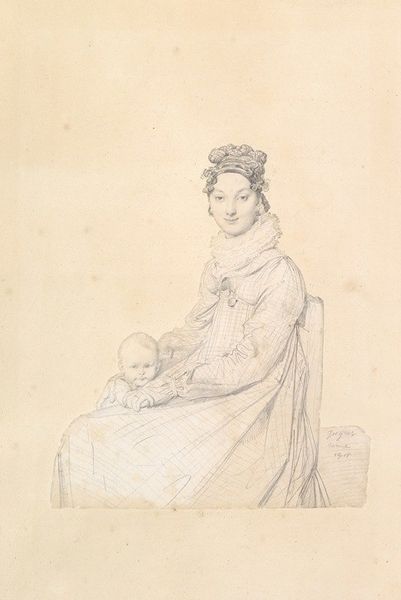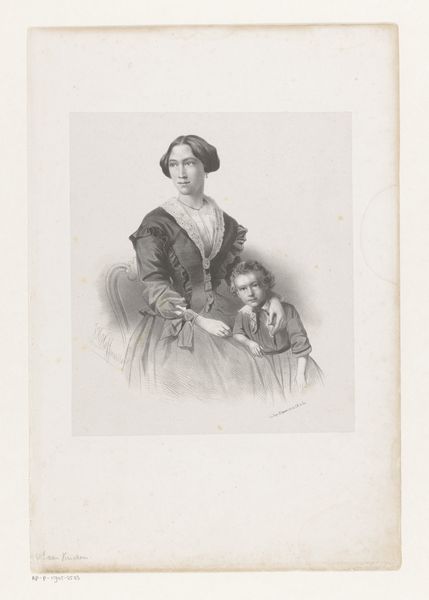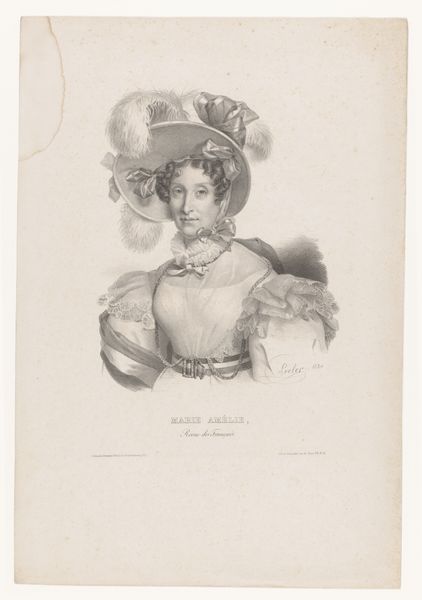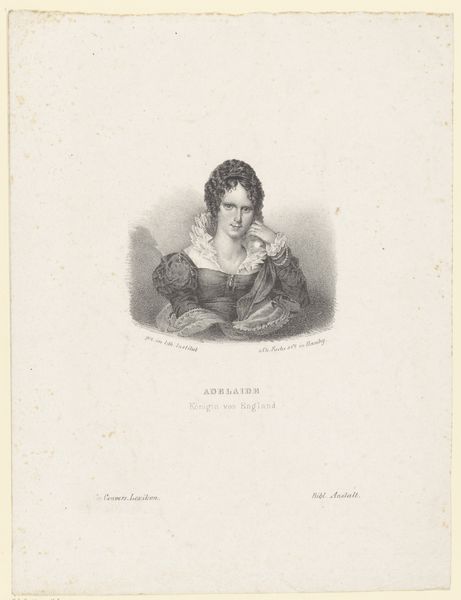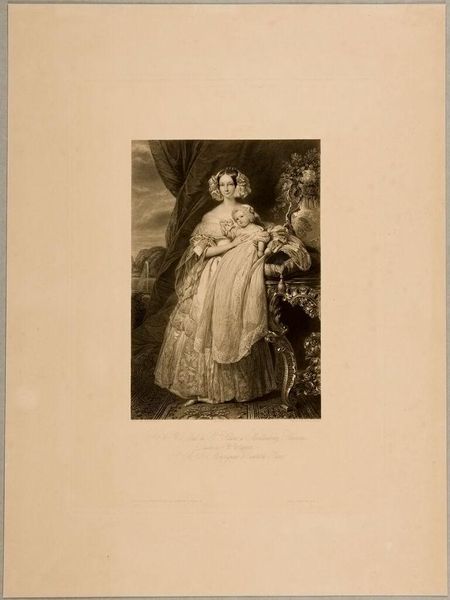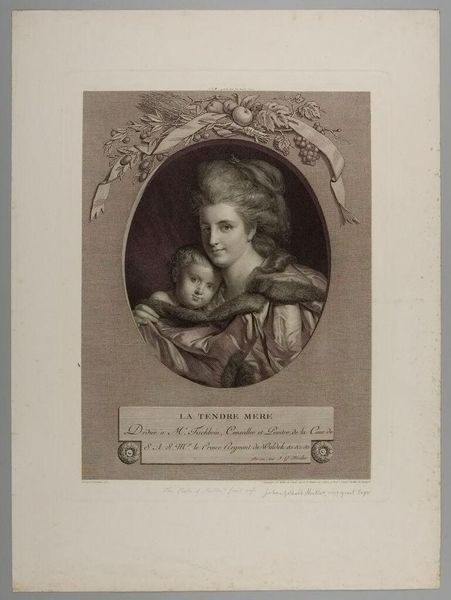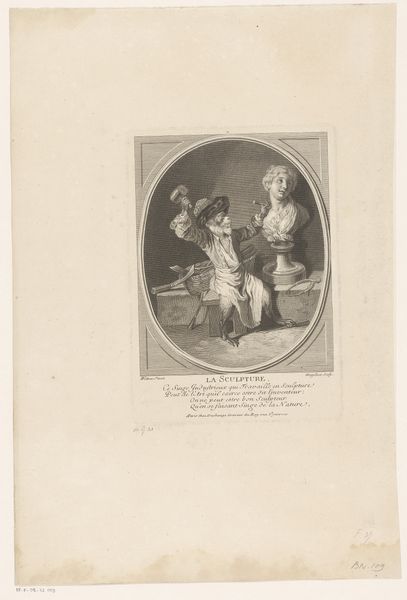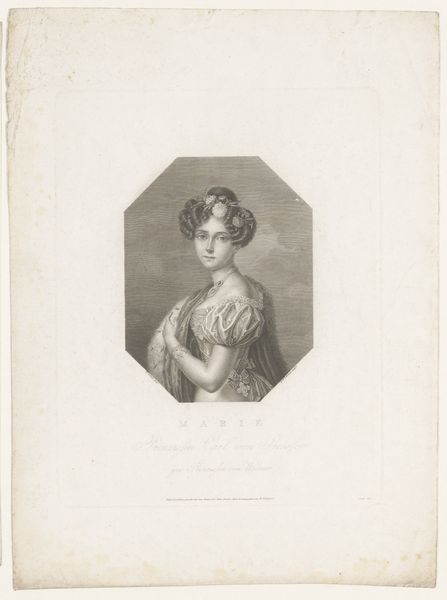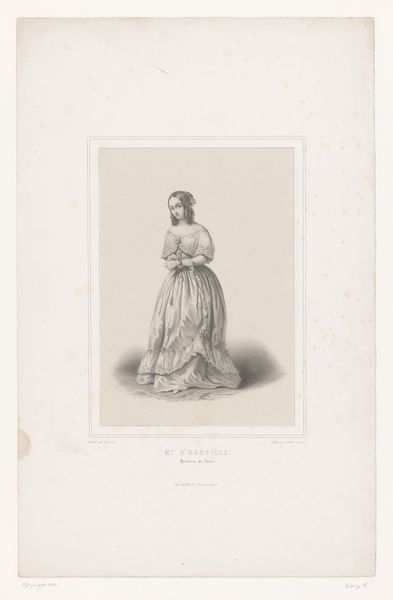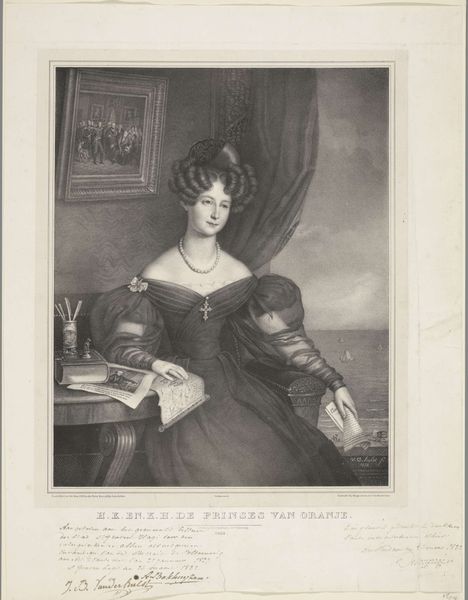
Portret van Henriëtte van Nassau-Weilburg en Maria Caroline van Oostenrijk 1827 - 1834
0:00
0:00
drawing, print, pencil
#
portrait
#
pencil drawn
#
drawing
# print
#
pencil sketch
#
pencil drawing
#
romanticism
#
pencil
#
pencil work
Dimensions: height 391 mm, width 279 mm
Copyright: Rijks Museum: Open Domain
Curator: Welcome. Before us hangs "Portret van Henriëtte van Nassau-Weilburg en Maria Caroline van Oostenrijk," rendered between 1827 and 1834 by Franz Stöber. It's a pencil drawing transformed into a print. Editor: Immediately, I'm struck by its delicate, almost ethereal quality. The light seems to emanate from the figures themselves. It's remarkable how Stöber captured the textures, particularly the elaborate frills and the fabric of their dresses, with just pencil. Curator: Indeed. Considering its historical moment, we can examine the process through which this image was disseminated. Prints such as these facilitated wider access to portraiture. The materials were relatively inexpensive. Reproductions, then and now, create conversations of cultural importance. Who consumes them and why? Editor: From a formal perspective, the composition guides our eye effortlessly. Notice how the curves of the mother’s dress mirror those of the chair, creating a sense of stability. The contrast of light and shadow accentuates the soft expressions of the women. Also, the positioning—the gaze, the holding of flowers—seems crucial. What meanings might these communicate? Curator: Well, consider the means by which the material image was manufactured and distributed; its function. Was its intention pure aesthetic pleasure or political propaganda? Editor: I agree, these portraits operated in a cultural marketplace. Nevertheless, Stöber manipulated the medium to convey specific feelings and ideas about feminine virtue. How can we access such a marketplace without interpreting aesthetic decisions as carefully constructed symbols? Curator: Fair, yet this artwork reflects a wider trend of art making where labor and distribution shaped its cultural worth as much as Stöber's touch did. By considering these perspectives, we begin to consider the portrait’s complete journey as it traverses different locations, collections and even perhaps intentions over the ages. Editor: A comprehensive outlook, I believe. I find myself more deeply drawn to Stöber’s nuanced visual language, seeing the convergence of artistic form and historical content, and feeling a subtle emotional impact as I consider how form informs purpose.
Comments
No comments
Be the first to comment and join the conversation on the ultimate creative platform.
